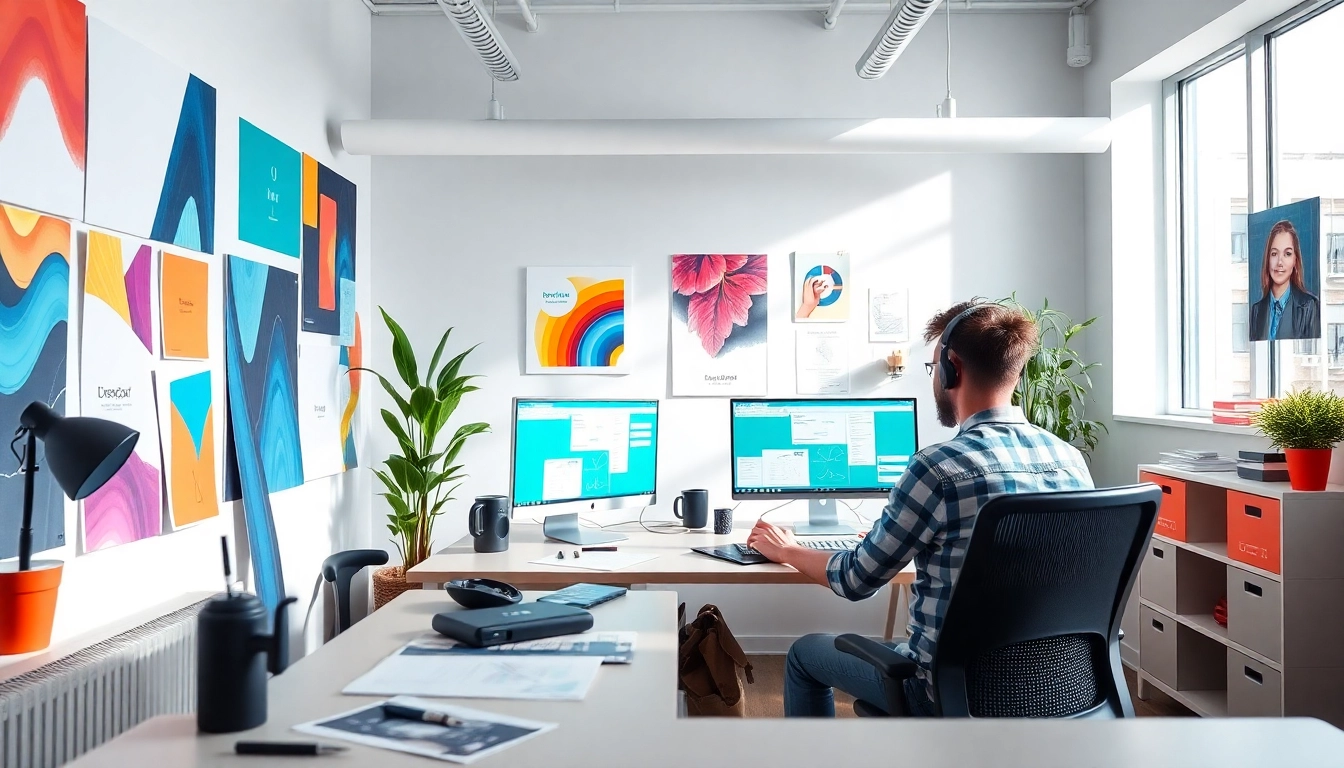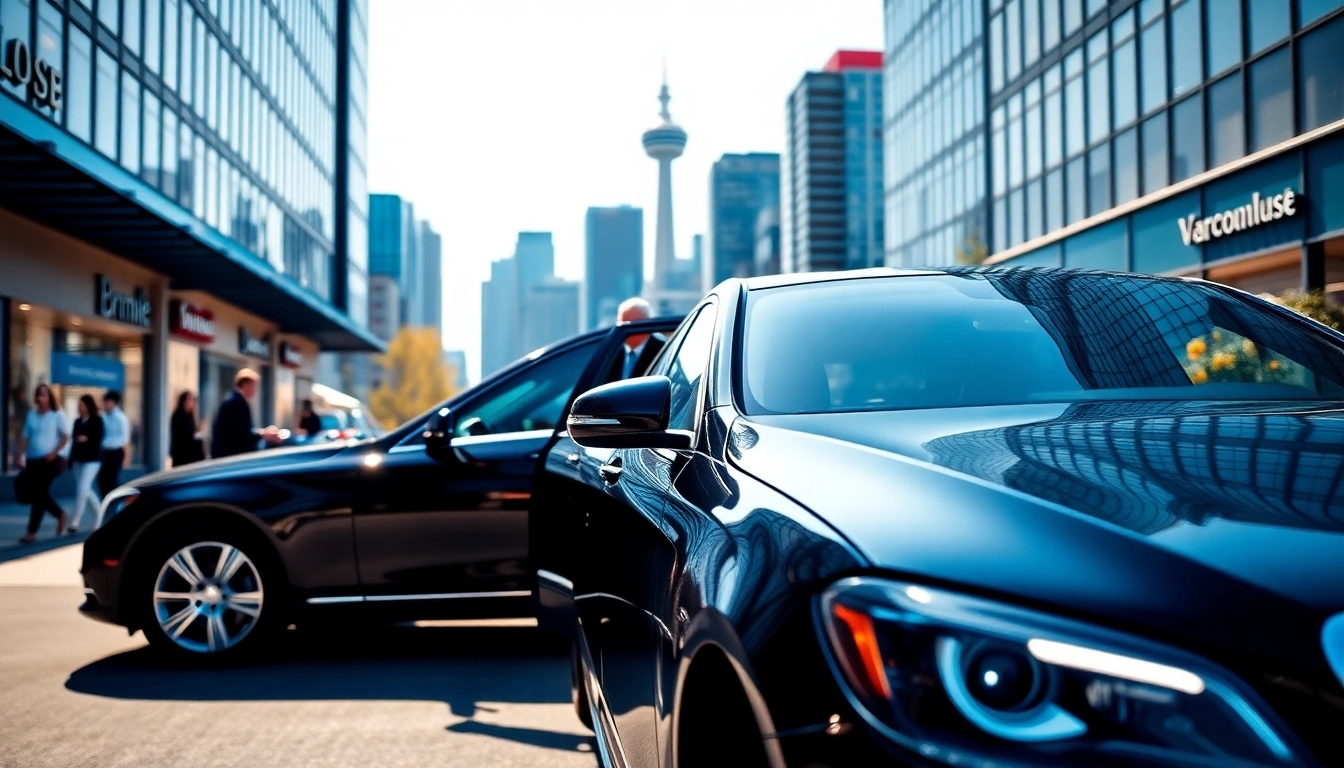Understanding Custom Graphic Design
At its core, Custom Graphic Design is a unique service that transforms ideas into visual experiences. Through tailor-made graphics, brands can establish a recognizable identity, enhance consumer engagement, and convey their core messages effectively. The significance of custom graphic design in today’s digital-savvy era cannot be overstated, as it caters to businesses of all sizes, requiring an adaptable branding approach in a saturated market.
Definition and Importance
Custom graphic design refers to the creation of visual content that is specifically tailored to meet the needs and preferences of a individual brand or business. Unlike stock images or templates, custom designs are created from scratch, ensuring uniqueness and alignment with the brand’s identity. This bespoke nature of graphic design allows for enhanced brand recognition and a stronger connection with target customers. Effective custom graphic design contributes to a business’s overall marketing strategy, influencing brand perceptions and consumer behavior.
Types of Custom Graphic Design
There is a wide array of custom graphic design types that businesses can leverage to enhance their brand presence. Some of the most common types include:
- Logo Design: Your logo is a fundamental aspect of your brand identity. A well-designed logo conveys your brand’s personality and values.
- Brand Identity: Beyond just a logo, brand identity design encompasses visual elements like color palettes, typography, and communication styles that create a cohesive brand image.
- Print Design: Custom graphics for marketing materials such as brochures, flyers, and business cards help provide tangible assets that represent your company offline.
- Web Design: This includes the layout, structure, and visual aesthetics of websites, ensuring they are not only attractive but user-friendly.
- Social Media Graphics: Engaging graphics tailored for use on social media platforms can significantly boost user engagement and shares.
- Packaging Design: Creative package design helps your products stand out on shelves and can influence purchasing decisions.
Benefits for Businesses
Investing in custom graphic design offers numerous advantages, such as:
- Enhanced Brand Recognition: Unique graphics help differentiate a brand from competitors and foster a memorable consumer experience.
- Increased Engagement: Custom designs that resonate with target audiences encourage higher engagement rates on various platforms.
- Improved Communication: Effective graphic design ensures that complex concepts and messages are conveyed clearly and quickly.
- Boosted Sales: Visual elements significantly impact purchasing decisions, and appealing designs can enhance sales performance.
- Professional Appearance: High-quality graphics give a business a polished and credible image, further attracting clients.
Key Elements of Effective Custom Graphic Design
A successful custom graphic design project hinges on understanding and implementing essential design elements, which include:
Visual Hierarchy and Composition
Visual hierarchy refers to the arrangement of elements in a way that guides viewers’ attention in a deliberate manner. Effective use of size, color, and placement can create a natural flow, helping audiences understand what is important. Strong composition enhances readability, making sure that important messages stand out. Achieving visual balance is crucial when laying out design components, whether it’s a website, a flyer, or a logo.
Color Theory in Graphic Design
Color influences perceptions and emotions; understanding color theory can help designers evoke the desired feelings and responses from audiences. The psychology of color plays a significant role in branding, as different colors can evoke specific associations. For example, blue often signifies trust and professionalism, while red can convey excitement and urgency. Leveraging the right color combinations can enhance aesthetic appeal and ensure that designs are in line with brand identity.
Typography: The Art of Fonts
Typography is an integral part of graphic design, where the choice of font can significantly influence readability and style. Custom typography can elevate a design by establishing a unique voice. Designers need to consider factors such as font legibility, pairings, and brand alignment. The use of whitespace around text also contributes to overall design clarity and can help highlight key messages more effectively.
Choosing the Right Custom Graphic Designer
Choosing the right designer is critical to the success of your graphic design project. It involves careful consideration of their skills and alignment with your business needs. Here’s what to consider:
Portfolio Evaluation
When selecting a graphic designer, reviewing their portfolio gives insight into their style, experience, and capabilities. Look for a diverse range of projects that demonstrate their ability to execute different types of designs. Pay attention to projects that align with your vision and target audience to gauge if they can deliver the design quality you require.
Understanding Your Needs
Before approaching designers, it’s important to have a clear understanding of your specific needs. Consider factors such as your brand’s objectives, target audience, and design elements. Clear briefs will facilitate effective communication with designers and enable them to meet your expectations more precisely.
Budgeting for Custom Design
Design costs can vary widely based on designer experience, project scope, and complexity. Establishing a budget upfront helps in identifying potential designers who can work within your financial constraints. Keep in mind that while lower costs can be tempting, investing in quality design is crucial for achieving impactful results.
Best Practices for Custom Graphic Design Projects
A well-managed graphic design project leads to successful outcomes. Here are some best practices to ensure smooth execution:
Collaborative Design Process
Effective collaboration between clients and designers ensures that projects are developed based on mutual understanding. Regular checkpoints allow for refining ideas and integrating feedback, ultimately resulting in a design that meets expectations. Collaboration fosters creativity and innovation, yielding more effective solutions.
Feedback and Revisions
Providing feedback during the design process is essential for achieving a final product that aligns with your vision. Be specific about what you like or dislike, and suggest areas for improvement. Constructive criticism enables designers to understand your preferences better and make necessary adjustments, enhancing the likelihood of successful outcomes.
Final Deliverables and Formats
Once the design is finalized, ensure that all necessary deliverables are provided in various formats suitable for both digital and print use. Common file types include PNG, JPEG, PDF, and AI. Having multiple formats ensures that your designs can be used across different platforms and formats, maintaining quality and integrity.
Future Trends in Custom Graphic Design
The landscape of graphic design continually evolves, presenting opportunities for innovation. Staying ahead of these trends can give businesses a competitive edge. Here are some key emerging trends:
Minimalism and Simplification
As audiences become increasingly overwhelmed with visual stimuli, minimalism has emerged as a trend rooted in simplicity. Clean lines, vibrant negative spaces, and focused content help designs stand out while promoting clarity and engagement. Minimalist designs also lend themselves well to modern aesthetics, making them adaptable across different contexts.
Integration of AI in Design
Artificial intelligence is becoming an integral part of graphic design, enabling designers to leverage advanced tools for efficiency and creativity. AI can assist in tasks like generating design prototypes, suggesting color schemes, and even predicting design trends. This technology enables designers to focus more on the creative process while ensuring quality output.
Personalization and Customization
As consumers continue to seek personalized experiences, graphic design approaches are shifting toward customization. Brands that harness data to create personalized visuals can forge deeper connections and resonate more effectively with their target audiences. Custom graphics tailored to specific audience segments can lead to enhanced engagement and loyalty.



